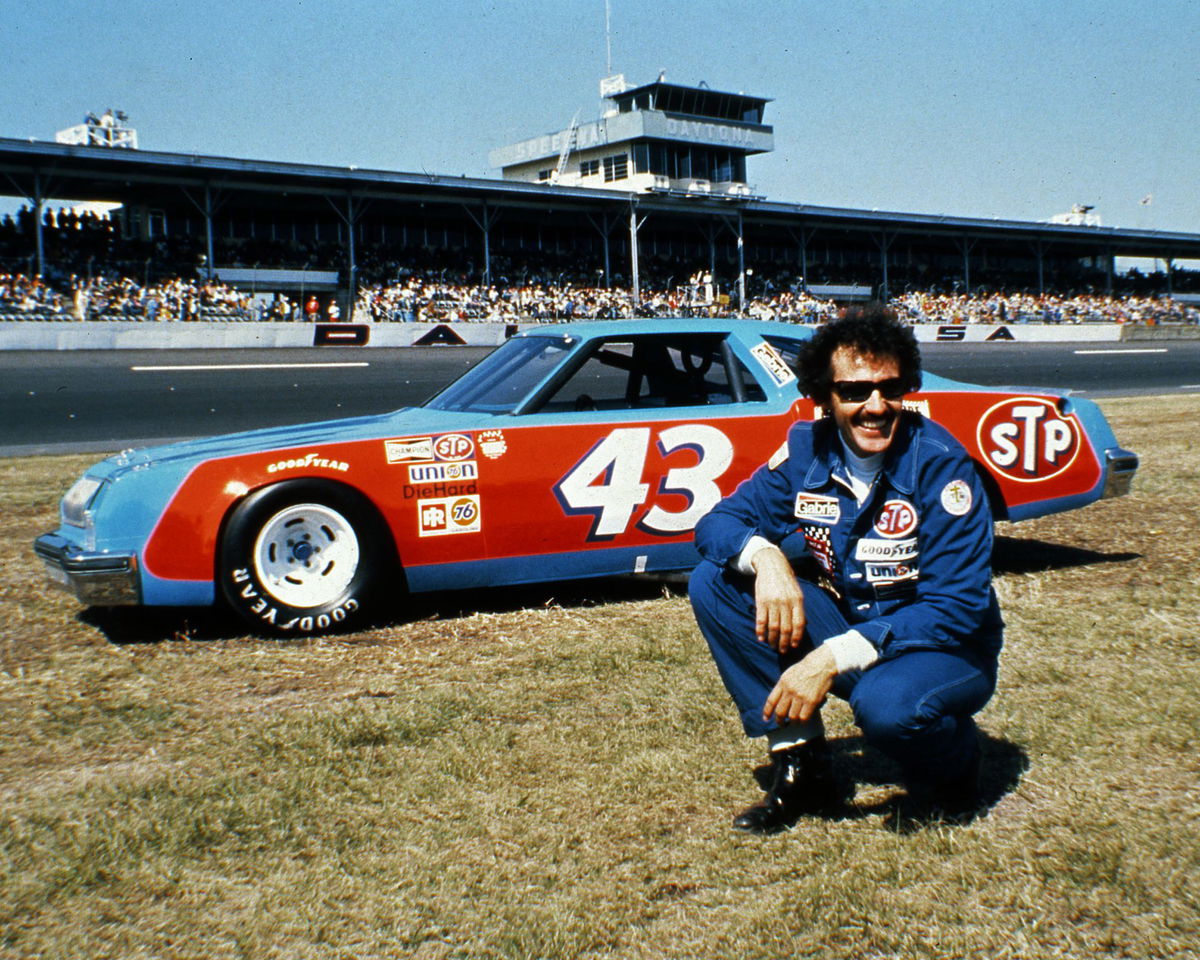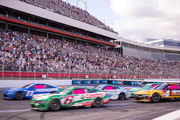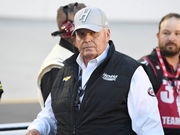
Getty
DAYTONA BEACH, FL – 1979: Richard Petty rallied late in the season to gain the advantage and win an unprecedented seventh national title in NASCAR’s Cup Series. (Photo by ISC Archives/CQ-Roll Call Group via Getty Images)

Getty
DAYTONA BEACH, FL – 1979: Richard Petty rallied late in the season to gain the advantage and win an unprecedented seventh national title in NASCAR’s Cup Series. (Photo by ISC Archives/CQ-Roll Call Group via Getty Images)
Under the Southern sun at tracks from Daytona to Darlington, Richard “The King” Petty began a NASCAR journey that would become revered. Five decades before grandstands whispered his name in awe, Petty not only amassed a staggering 200 Cup Series wins and seven championships, but he also transformed driving into art. From his Cinderella start at the 1960 Daytona race to claiming record-shattering victories in the late ’60s, Petty’s reign became the standard by which drivers are measured. Yet, the King’s crown was forged not just from triumph, but from constant, hidden battles with the physical toll of stock-car racing.
Watch What’s Trending Now!
Through 35 grueling seasons, Petty defied the odds, pushing through bone-crushing crashes, pulverized limbs, and the old-school cockpit heat that stripped most drivers of their focus. For instance, at the 1970 Rebel 400 in Darlington, his Plymouth flipped violently after a tire failure, leaving him battered but unbowed, and later inspiring the safety net windows. Then, in 1980 at Pocono, Petty endured a wreck so brutal that it fractured his neck, yet he taped up in time to race the very next weekend. And yet, amid those injuries and sweat-soaked battles, it wasn’t the crash that haunted him the most; it was the invisible, creeping menace that stole his breath.
ADVERTISEMENT
The invisible struggle that shadowed Richard Petty’s legacy
In Jeff Gluck’s 12 Questions interview, when asked about the most miserable moments he ever faced inside a car, Petty didn’t hesitate to put decades of pain into perspective. “That’d be hard to say after running 30-some years and all the heat and broken bones and all that,” he recalled, before revealing what truly haunted him. “The biggest part was getting carbon monoxide (poisoning). And you don’t feel anything, you just slow down. But as far as hurting, sometimes you’d have ribs broken or legs broken or something. You had to drive a race car, so you just took a Goody’s and went on down the road.”
Petty’s generation routinely raced without the modern HANS Devices, full-face helmets, and sealed cockpits we take for granted today. Drivers leaning on quick OTC pain remedies were part of the toolbox for getting back behind the wheel, not an oddity. When Gluck asked how he would actually know he had been poisoned on track, Petty described the subtle, terrifying onset: “What happened is you’d just start slowing down. You’re thinking you’re running wide open and first thing you know, somebody who is 10 laps behind passed you. So you say, ‘OK, it’s time for me to get out of this thing.’”

Imago
Bilder des Tages – SPORT January 20, 2017 – Charlotte, NC, USA – Former NASCAR Motorsport USA driver and Hall of Fame member Richard Petty smiles while autographing items for fans prior to the NASCAR Hall of Fame Induction ceremony on Friday, Jan. 20, 2017, in Charlotte, N.C. NASCAR Hall of Fame – ZUMAm67_ 20170120_zaf_m67_018
NASCAR interviews and safety reporting over the years have repeatedly recorded drivers recounting near-invisible symptoms. Even Jeff Gordon once described similar early signs, “I recognized it early on,” Gordon said. “Headaches, my voice changing, the dehydration becoming more of a factor. I knew it had to be what I was breathing.” So, Petty’s moment-by-moment account is consistent with both clinical science and other driver testimonies.
ADVERTISEMENT
When asked how long it took to recover, Petty spoke about oxygen and a career-long shadow from the first incident. “You get out and start getting some oxygen, and they’d give you pure oxygen,” he replied. “First time I got it was Atlanta, and it bothered me the rest of my racing career — I think it was ’61 or ’62. But a lot of times, I’d feel it coming on quick, and I’d get out of the car, get some oxygen and then get back in the car.”
ADVERTISEMENT
NASCAR’s in-field crews were prepared to administer oxygen to dazed drivers, and by the 1970s, and later undertook studies into the problem precisely because veterans like Petty kept reporting lingering effects after certain races. Some recent examples also include Denny Hamlin‘s nausea and double vision at Dover (2019) and Cody Ware’s post-Darlington episode in 2021 that shelved him for races while teams assessed his recovery. NASCAR and teams now use better cockpit sealing, helmet air and medical protocols, but the sport’s history is a reminder that the invisible risks once shrugged off from the cockpit still drive major safety reforms and still require vigilance.
Top Stories
New Charter Deal Triggers ‘Financial Frenzy’ as NASCAR Teams Set for Massive Payday

Rick Hendrick Strikes Fear in NASCAR Fans With Chevy’s New “Illegal” Car

Major Blow to Trackhouse Racing as Team Penske Steals Veteran Crew Chief Back in Unexpected Move

Martin Truex Jr’s Former Crew Chief Ends 12-Year Fight In Huge Personal Announcement

Chevy Team to Enter Kyle Larson’s Series as Michael Jordan Ends NASCAR’s Monopoly

Why Richard Petty thinks stage racing misses the point
In today’s NASCAR, stage points have become as valuable as race victories, with drivers like William Byron and Chase Briscoe thriving under the system. But for Richard Petty, the man who built his legacy chasing nothing but the checkered flag, this shift in focus is baffling. Petty’s career was defined by one thing: crossing the finish line.
ADVERTISEMENT
That’s why the King put it straight on The Athletic: “When they give points for leading different (stages) in the race and they give points for all this other stuff, that’s a bunch of crap, OK? If you’re sitting there and watching a football game, and the team has been behind the whole game, and they kick a field goal and they win the game, the guys who lost got a zero. That should be the same way in NASCAR racing. I don’t care if you lead 499 laps of a 500-lap race — if you get beat, then you’re not the winner, and you shouldn’t have any (extra) points.”
For Petty, NASCAR’s modern tweaks have strayed too far from its roots. “They’re trying to keep up with other sports. They’re trying to come up with new ideas. And so far, I haven’t seen any of them really working,” he said. His stance echoes the uncompromising lessons of his early career, where wins were survival for racing families, not just stats on a page.
ADVERTISEMENT
ADVERTISEMENT
ADVERTISEMENT

